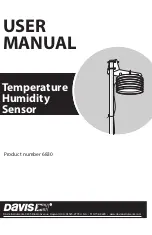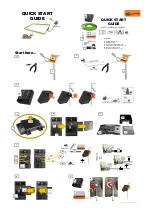
2015-01-07
Page 3/9
be connected to the internal terminals. If a
number of slave units are connected to the
KSUA, the first and last units must be
terminated by closing jumper I in the KSUG or
jumper PL2 in the KSUA. Sometimes, the
KSUA is between other units, and in this case
both the terminations are in KSUGs. Note that
there cannot be more than two terminations in
the whole network. The maximum line length
is 1200m without repeater.
Addressing
Jumper settings for address 5.
A KSUG will only work in the network if an
address is defined. The jumpers numbered
1,2,4,8 and 16 are used to configure the
address. For example to use address 15, close
jumpers 1,2,4 and 8 (1+2+4+8=15). You
cannot use the same address for two units
within the same network. The addresses go
from 0 to 31. To set address 0, leave all jumper
1,2,4,8 and 16 empty. Dampers and detectors
are counted from address 0 upwards. For
example address 0 DMP1+2. Address 1
DMP3+4. Address 3 SPJ5+6 etc. (two
dampers per address)
Description of jumpers in network
mode.
Jumper On
Off
1,2,4,8,16 Address configuration
F
BSIA BR24-F-ST RFT MANF
VD24
G
RFT MANF
VM24
Controlled by
jumper F
H
Stand-alone mode Network mode
Choice of damper actuator.
Jumper F and G selects the actuator type to be
used. If jumper F is ON, Belimo BSIA24 and
BR24-F-ST. If jumper G is on RFT MANF
VM24 type is selected. If both jumper F and G
is off RFT MANF VD24 is selected.
Smoke detectors
The smoke detectors are connected to the
KSUG and are then operated by the KSUA as
detector groups, which in turn control the
dampers. The EXT input is logically
connected to detector input 1. This means the
EXT input can be used for a heat detector, for
example, or an external central fire alarm
system that can be configured to be part of a
detector group.
When you perform a reset on the KSUA all
detectors are opened for 5 seconds to reset
them.
Malfunctions
If a communication error occurs, the KSUG
will take over and close the dampers after 15
seconds.
Other errors are forwarded to the KSUA for
central processing.
LEDs
Every time a correct message is received, the
Operation LED switches on or off in order to
indicate that communication with the master is
working correctly. The Error LED lights up if
communication stops. Other LEDs work in the
same way as in stand-alone mode.
Buttons
No function in network mode.
Stand-alone mode
(Jumper H must be ON)
Jumpers H and 4 are ON (stand-alone
mode,RFT MANF VD24 actuator with only
damper 1 in use)


























